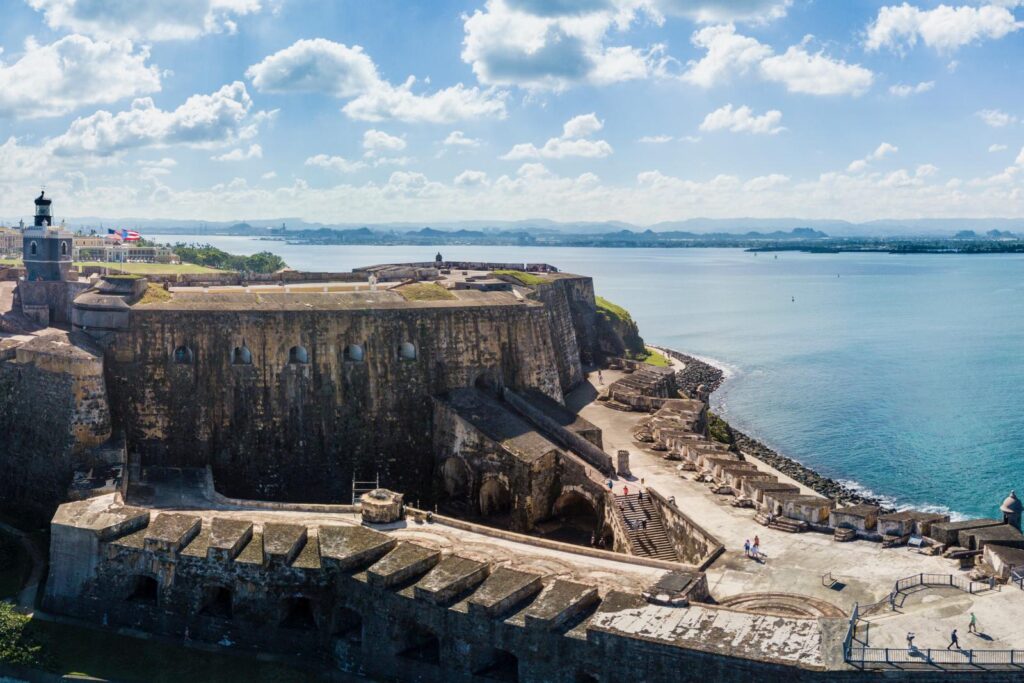
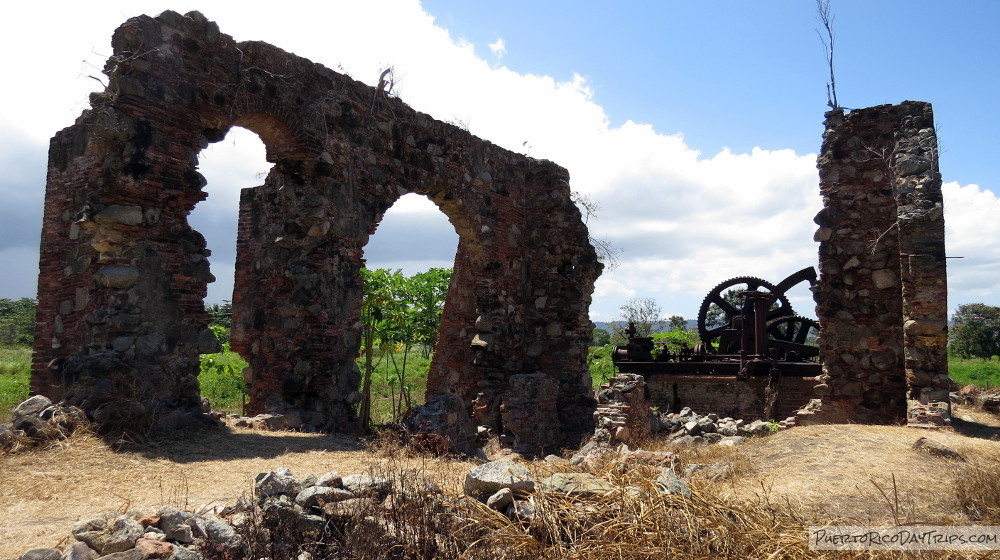
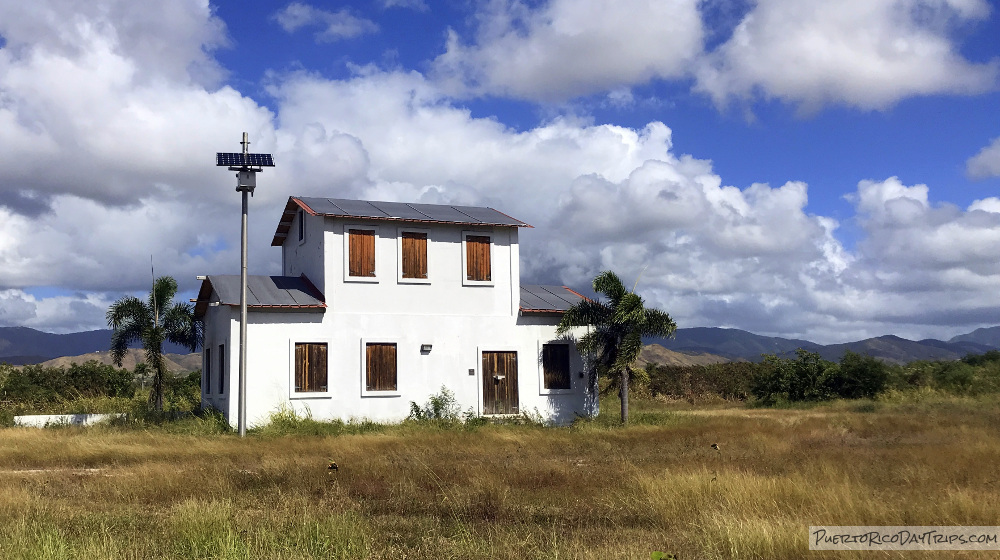
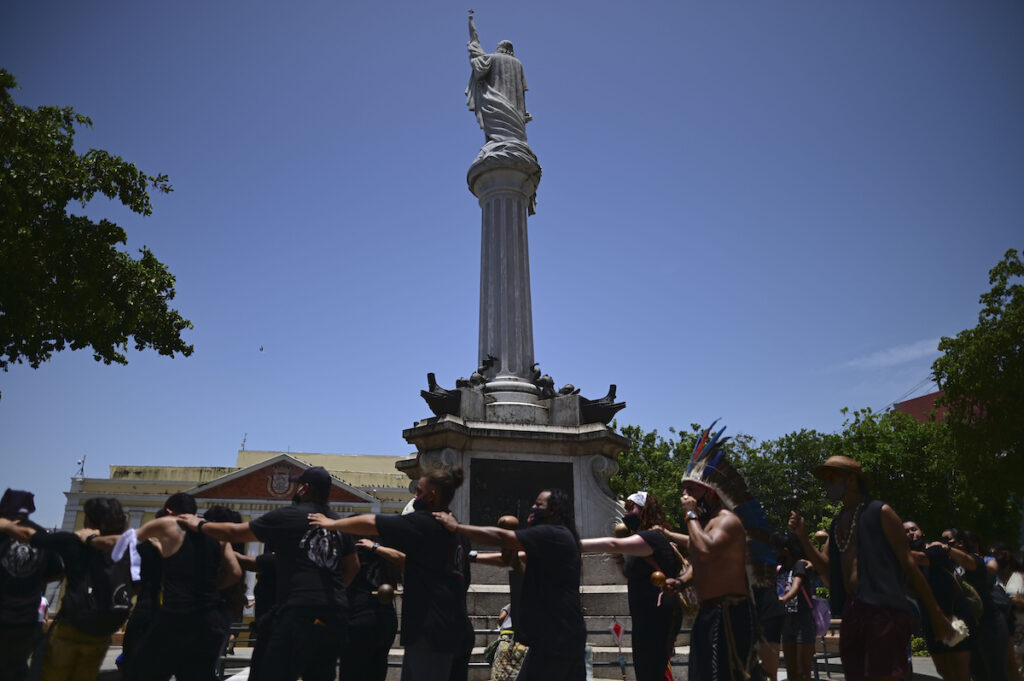
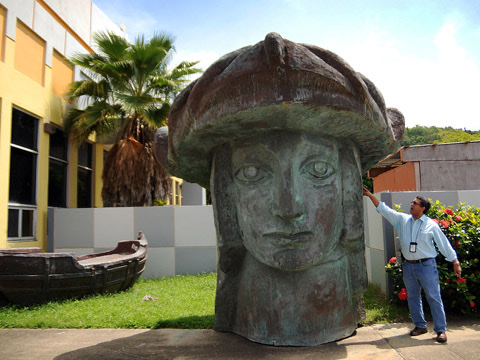
- Material basis of the colony – The colonial economy was built on the production of agricultural commodities, primarily sugarcane, as well as the extraction of raw materials, primarily gold. In addition, tobacco and coffee were farmed by the United States after they annexed the island in 1898, and were both highly profitable. Extensive land was cleared to provide space for plantations, and American Indian slaves, African slaves, and those indigenous to the island (the Taíno culture dominated before Spanish colonization) were used as the primary sources of labor.
- Political and judicial basis of the colony – Both Spain and the United States maintained power and order in their economic systems through strict enforcement of laws and rules. Those who disobeyed faced harsh punishment, which was at worse severe harm or death. The rulers were Spanish and American leaders entrusted by their governing bodies. In 1508, Juan Ponce de León, a former lieutenant under Christopher Columbus, founded Caparra, the first European settlement in Puerto Rico. According to Yale University researcher Russell Schimmer: “Within a year, Ponce de León had subdued a majority of the native population and gained control over most of the island. As a result of this success, he was named Governor and Captain-General of the island in 1509” (Puerto Rico).
- Ideological basis of the colony – Both Spanish and American colonizers justified their presence in Puerto Rico in many ways. Common belief was that the indigenous people were uncivilized and the country needed intervention. Puerto Ricans were stripped of their rights, and all authority was given to the colonizers. Josiah Strong, an American Protestant, went as far as stating that God gave the Anglo-Saxon race the right to expand their power and control. He thought the races were all in competition, and that European people were set to win and conquer all the other races. This ideology of racial superiority was not uncommon.
Works Cited
The Associated Press. “Puerto Rico Questions Spain’s Legacy as Statues Tumble in US.” Latino Rebels, Futuro Media Group, 12 July 2020, https://www.latinorebels.com/2020/07/12/puertoricostatues/.
“Exploring Castillo San Felipe Del Morro in Old San Juan.” Discover Puerto Rico, Discover Puerto Rico, https://www.discoverpuertorico.com/article/exploring-castillo-san-felipe-del-morro-old-san-juan.
Gwenn. “Check out La Lucía Sugar Mill Ruins.” Puerto Rico Day Trips, PuertoRicoDayTrips.com, 7 June 2015, https://www.puertoricodaytrips.com/lucia-sugar-mill/.
Gwenn. “History and Nature Combine at Aguirre Sugar Mill.” Puerto Rico Day Trips, PuertoRicoDayTrips.com, 8 Feb. 2021, https://www.puertoricodaytrips.com/aguirre-sugar-mill/.
Lisaparavisini. “Puerto Rico Wants Spanish Royals to Inaugurate Giant Columbus Statue.” Repeating Islands, 23 Oct. 2014, https://repeatingislands.com/2014/10/22/puerto-rico-wants-spanish-royals-to-inaugurate-giant-columbus-statue/.
Schimmer, Russell. “Puerto Rico.” Genocide Studies Program, Yale University, https://gsp.yale.edu/case-studies/colonial-genocides-project/puerto-rico.